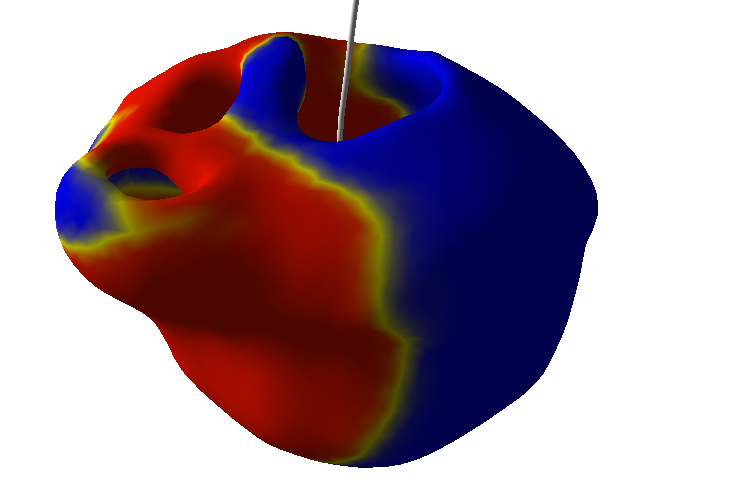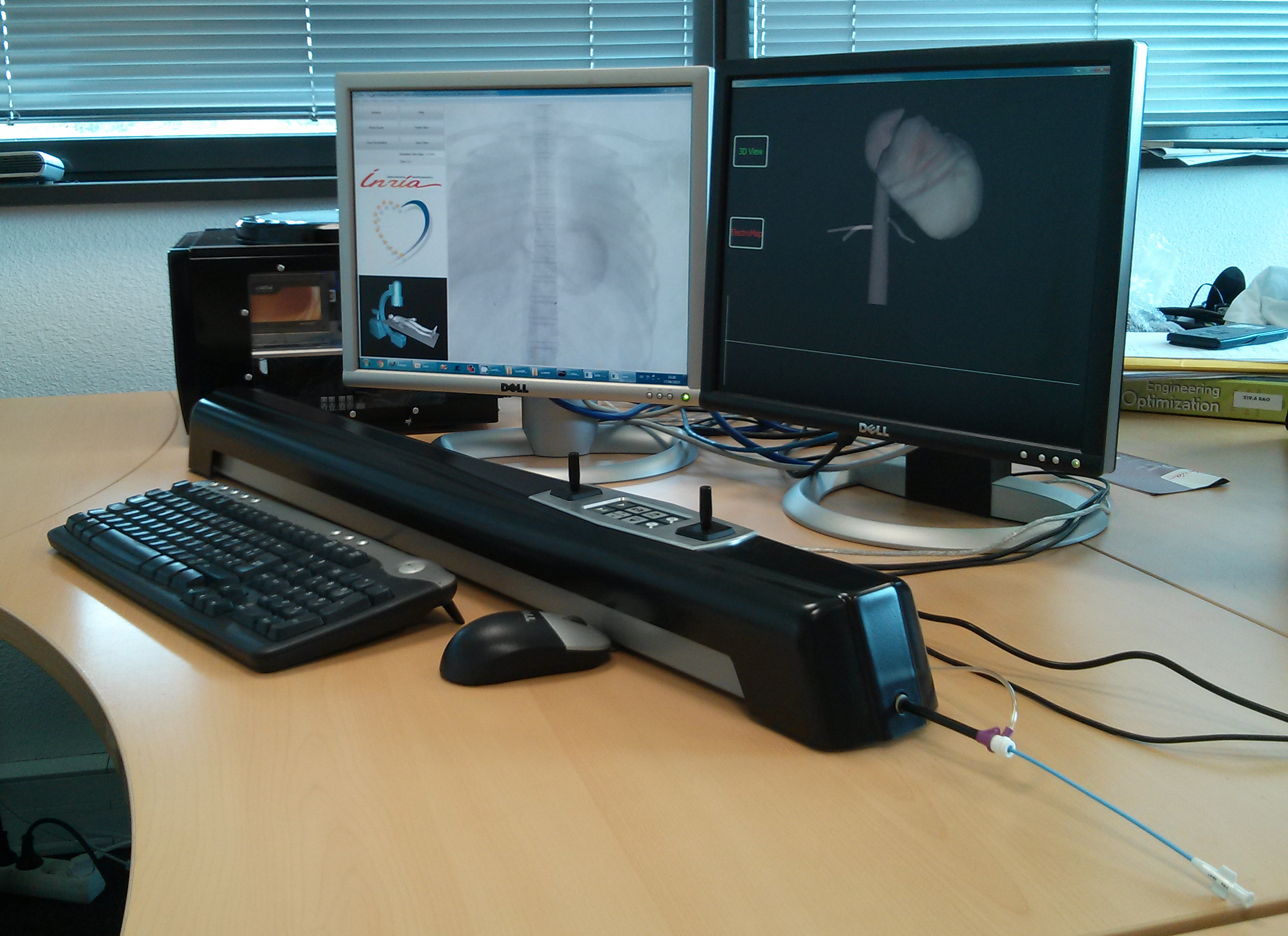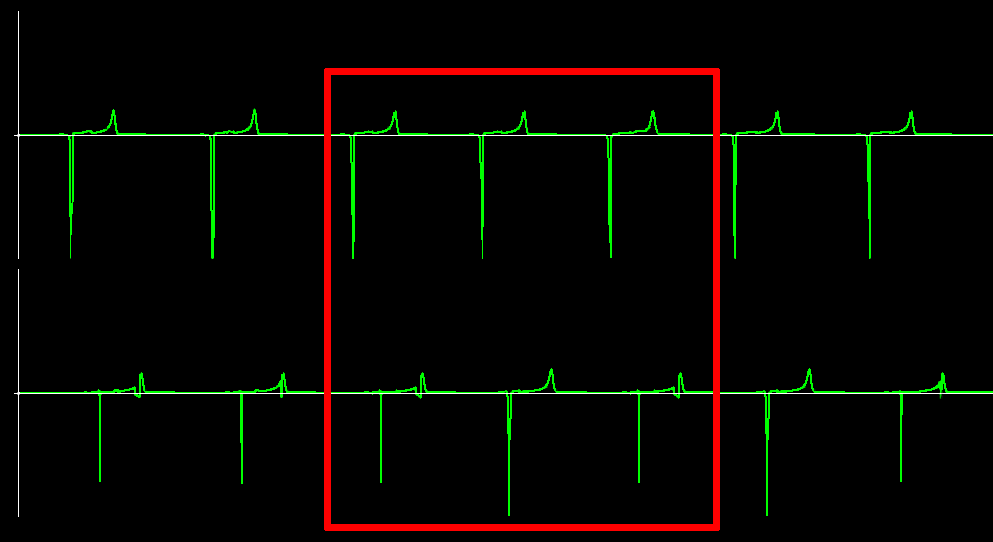Section: New Results
Electrophysiology
Cardiac arrhythmia is a very frequent pathology that comes from an abnormal electrical activity in the myocardium. This work aims at developing a training simulator for interventional radiology and thermo-ablation of these arrhythmias. After tackling the issue of fast electrophysiology, a first version of our training simulator was proposed.
The first main contribution of this work is the interactive catheter navigation inside a moving venous system and a beating heart. The virtual catheterization reproduces navigation issues that can be solved using a bending catheter. Second, our real-time GPU electrophysiology model allows interactions during the simulation such as extra-cellular potential measurement, RF ablation, and electrical stimulation. An innovative management of the computational units based on multithreading offers performances close to real-time. This framework is therefore a substantial step towards realistic and highly efficient virtual training systems in cardiology. As future work, we intend to use patient-specific data in our framework so that cardiologists could quantitatively assess the realism of our virtual training.





